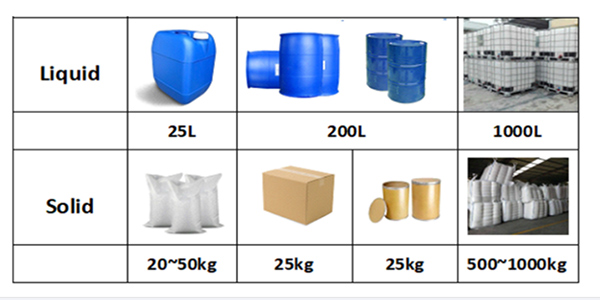Barium chromate/cas 10294-40-3/BaCrO4
Product name:Barium chromate
CAS:10294-40-3
MF:BaCrO4
Melting point: 210°C
Density:4.5 g/cm3 at 25°C
Package:1 kg/bag, 25 kg/bag, 25 kg/drum
| Items | Specifications |
| Appearance | Yellow crystal |
| Purity | ≥99% |
| Cl | ≤0.2% |
| CO3 | ≤0.1% |
| Water insoluble matter | ≤0.05% |
| Hydrochloric acid insoluble matter | ≤0.1% |
1.It is used for production of safety match, pottery, glass pigment, etc.
2.It is used as reagent for the determination of sulfate and selenate.
Barium Chromate (BaCrO₄) has several applications, including:
1. Pigment: Due to its bright color and opacity, it is widely used as a yellow pigment in paints, coatings and plastics.
2. Analytical Chemistry: Barium chromate is used as a reagent in analytical chemistry for the determination of certain ions, especially in gravimetric analysis.
3. Corrosion Inhibitor: It is used as a corrosion inhibitor in metal coatings in certain formulations.
4. Ceramics and Glass: Barium chromate can be used in the production of ceramics and glass to impart color and improve certain properties.
5. Research: It is used in various research applications, especially those involving chromium compounds and their properties.
It dissolves or decomposes in inorganic acids. It is almost insoluble in water, dilute acetic acid and chromic acid solutions.
1. The quantity: 1-1000 kg, within 3 working days after get payments
2. The quantity:Above 1000 kg, Within 2 weeks after get payments.

1, T/T
2, L/C
3, Visa
4, Credit card
5, Paypal
6, Alibaba trade Assurance
7, Western union
8, MoneyGram
9, Besides, sometimes we also accept Bitcoin.

1 kg/bag or 25 kg/drum or 50 kg/drum or according to customers' requirement.

Stored at a dry, shady, ventilated place.
Due to its toxicity and potential environmental hazards, barium chromate should be stored with care. Here are some guidelines for proper storage:
1. Container: Store barium chromate in sealed containers made of suitable materials, such as glass or high-density polyethylene (HDPE) to prevent contamination and moisture intrusion.
2. Location: Store the container in a cool, dry and well-ventilated place away from direct sunlight and heat sources. Avoid storage in places with high humidity.
3. Labels: Clearly label containers with the chemical name, hazard warnings, and any relevant safety information.
4. Separation: Store barium chromate away from incompatible materials (such as strong acids and reducing agents) to prevent any hazardous reactions.
5. ACCESS: Limit access to storage areas to only those personnel who are trained and aware of the hazards associated with barium chromate.
6. Personal Protective Equipment (PPE): Ensure that anyone handling the material is provided with appropriate PPE, such as gloves and goggles.
Following these guidelines will help ensure the safe storage and handling of barium chromate.
1. Description of first-aid measures
General advice
Show this material safety data sheet to the doctor in attendance.
If inhaled
After inhalation: fresh air. Call in physician.
In case of skin contact
In case of skin contact: Take off immediately all contaminated clothing. Rinse skin with water/ shower. Consult a physician.
In case of eye contact
After eye contact: rinse out with plenty of water. Call in ophthalmologist. Remove contact lenses.
If swallowed
After swallowing: immediately make victim drink water (two glasses at most). Consult a physician.
1. Precautions for safe handling
Advice on safe handling
Work under hood. Do not inhale substance/mixture.
Advice on protection against fire and explosion
Keep away from open flames, hot surfaces and sources of ignition.
Hygiene measures
Immediately change contaminated clothing. Apply preventive skin protection. Wash hands
and face after working with substance.
2. Conditions for safe storage, including any incompatibilities
Storage conditions
Tightly closed. Keep locked up or in an area accessible only to qualified or authorized
persons. Do not store near combustible materials.
When transporting Barium Chromate (BaCrO₄), several precautions must be taken due to its toxicity and potential environmental hazards. Here are some key considerations to take into account:
1. Regulatory Compliance: Ensure compliance with local, national, and international regulations regarding the transportation of hazardous materials. Barium Chromate may be classified as a hazardous material.
2. Packaging: Use suitable packaging that is strong, durable and not easily broken. The container should be sealed and labeled as required to indicate that the contents are dangerous goods.
3. Label: Clearly label packaging with correct hazard symbols and information, including the chemical name, UN number (if applicable) and any relevant safety warnings.
4. Personal Protective Equipment (PPE): Ensure that personnel involved in the transportation process wear appropriate PPE, such as gloves, goggles, and protective clothing to minimize exposure.
5. Avoid incompatible substances: During transportation, barium chromate should be kept away from incompatible substances such as strong acids and reducing agents to prevent any dangerous reactions.
6. Emergency Procedures: Have emergency procedures in place in case of a leak or accident during transport. This includes having a spill kit and first aid supplies ready.
7. Training: Ensure that all personnel involved in transporting barium chromate are trained in handling hazardous materials and are aware of the risks associated with this substance.
8. Transportation Conditions: When transporting barium chromate, minimize exposure to heat, moisture, and the risk of physical damage. Avoid transporting in open vehicles or in environments that could cause leakage.
By following these precautions, the risks associated with the transportation of barium chromate can be effectively managed.
Yes, Barium Chromate (BaCrO₄) is considered a hazardous substance. It is classified as a toxic substance due to its potential health effects, especially because it contains hexavalent chromium (Cr(VI)), which is known to be carcinogenic and can cause various health problems.
Hazards associated with barium chromate:
1. Toxicity: Inhalation or ingestion of barium chromate can cause serious health effects, including respiratory problems, skin irritation, and gastrointestinal problems.
2. Carcinogenicity: Hexavalent chromium compounds, including barium chromate, are recognized carcinogens, which means that long-term exposure to them increases the risk of cancer.
3. Environmental Impact: If barium chromate is released into water bodies, it may cause harm to the environment, especially aquatic life.










